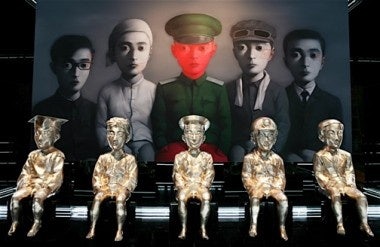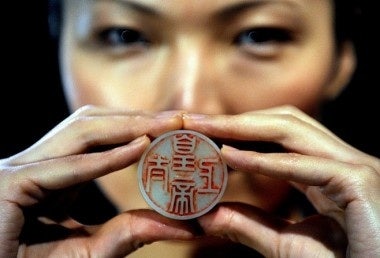Records Have Tumbled This Year For Traditional Works And Antiques, As Well As Contemporary Works By Living Chinese Artists#

Even after the market correction of 2008-2009, works by contemporary artists like Zhang Xiaogang still sell in the millions
Last spring, Jing Daily suggested that auction houses in Hong Kong were taking a new strategy to woo Chinese collectors, marketing heavily to the patriotic sentiments of ultra-wealthy Chinese by offering more antiquities from the reigns of popular historical rulers like the Qing Dynasty emperor Qianlong (1711-1799). Mainland Chinese collectors have shown a particular affinity for pieces from the court of Qianlong, whose empire-expanding accomplishments are held in high regard in China (particularly as a contrast to the "bad old years" of the late Qing), and at recent auctions in Hong Kong and elsewhere, these collectors shown a willingness to spend millions for important vases, name-chops or furniture.
Today, the New York Times looks at the enduring allure of Qianlong among China's newly wealthy -- many of whom are just now joining the ranks of China's burgeoning new collectors -- and concludes that the global pursuit of particular historical items at auction comes down to the perception among wealthy Chinese that these pieces are more than just valuable investments but also "glamorous badges of identity." From the article:
The most surprising displays of extravaganza took place in Hong Kong, where Sotheby’s was selling works of art carefully selected to appeal to the new wave of super-rich Chinese buyers whose eagerness for objects made for past emperors knows no financial limits.
Art is not really the issue. Objects that would hardly have caused a stir three decades ago are fought over with the kind of fervor that the faithful showed when going after relics in another age.
...
Further evidence of the intensifying Chinese obsession with imperial symbols of the Qianlong age was provided by porcelain.
The most extraordinary case is that of a vase of double gourd shape. Dai Run Zhai, the late dealer famous among New York collectors under his Americanized name J.T. Tai, acquired it in 1971 at a London auction for £1,680, then $4,200. On the underside, a Qianlong reign mark painted underglaze in square seal form indicates that the vase was made to be used in the palace. Mr Dai could never bring himself to sell the piece.
On Oct. 7, Alice Cheng, China’s most prominent businesswoman, who has been buying art at auction for decades, had apparently made up her mind to carry away the imperial trophy, no matter what. At $32.15 million the emperor’s vase became the most expensive Chinese work of art ever auctioned.
Patriotism has proven to be one of the driving factors for the explosion in auction prices for antiques. Another factor is growing scarcity. For many Chinese collectors with the means to do so, buying now -- even at jaw-droppingly high prices -- is seen as a smart move, as these pieces are only going to get harder to find and purchase in coming years, as more newly wealthy Chinese look to get involved in the auction world. However, this isn't limited only to antiquities, but is being seen in the modern and contemporary art markets as well.

This jade seal owned by emperor Qianlong smashed records this spring, selling for over $12 million to a Chinese buyer (Image: BBC)
As Jing Daily and others have pointed out recently, even after taking a hit in the wake of the global economic crisis in 2008 and early 2009, the overall environment in the Chinese contemporary art market has improved substantially, with artists like Zhang Xiaogang and Liu Ye setting new records and 71% of respondents to the recent ArtTactic confidence survey indicating a positive view of the Chinese contemporary art market. (Up from 73% of respondents having a negative view in February 2009.)
As Newsweek writes today, much of this has to do with a growing interest in Chinese art in general, and contemporary art specifically, among both Chinese and non-Chinese collectors:
[B]oth Chinese and foreign collectors have grown increasingly enamored of Chinese contemporary art. Though a natural correction occurred during the recession, the art market seems to be picking up again; in October Sotheby’s held its best-ever Asian-art auction (which also included watches and wines), raking in $400 million in sales.
In addition to general interest, a deciding factor in the optimism of Chinese collectors towards the contemporary Chinese art market has to do with their perceptions of the Chinese economy itself. As the recent ArtTactic survey found, the primary driver for the Chinese contemporary art market going forward will be economic growth. Although there are signs that GDP growth in China is cooling, it's still expected to maintain a comparatively high growth rate, and other issues like inflation -- rather than making Chinese art collectors shy away -- should actually spur them to diversify their investments into more art and antiquities in coming years.
As such, it's not that hard to understand what drives Chinese collectors to go far above high estimates for a Qianlong vase or a Liu Ye painting. Patriotism, and a desire to "bring antiquities home," for the former, and economic optimism for the latter.